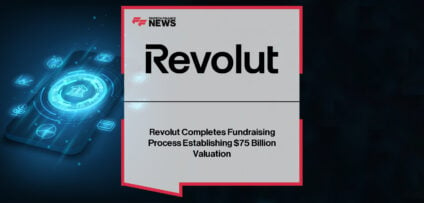Breaking News

EXCLUSIVE: “Core Teachings And Wily Swine” – Leigh Pepper, 10x Banking in ‘The Fintech Magazine’
Ugly back-office systems can’t be masked by layering on colourful tech – new thinking is needed, says Leigh Pepper, Chief Product Officer for 10x Banking
The phrase ‘lipstick on a pig’ has become the favourite fintech idiom to describe banks’ approaches to transformation, capturing the attempt to jazz up the UI and transform the UX by changing a form from a single page into individual screens, to capture my name and feel more like Apple.
I’m beginning to feel that the pig has been unfairly treated – it’s a highly intelligent and adaptable animal. If the underlying systems of most banks were half as porcine as the wily swine, then the industry’s reputation for innovation would be in a much better position. To be fair to the banks, most have done a decent job of improving digital experiences.
Integration of fintech solutions for electronic identity and verification has transformed most onboarding experiences. The ability to view how much I’ve spent on coffee and takeaways is now table stakes. Now that more processes can be completed through my mobile app, branches are largely redundant beyond marketing and providing a community brand connection. It feels like the battle for clever UI and UX is diminishing, with Monzo and Revolut having set the bar and the incumbents risen to the challenge.
But, when you lift the lid on many of these user experiences, it reveals not the pig but the sloth: slow underlying manual processes, poor customer experience at the slightest hint of being an exception and the ‘please visit a branch so Doris can smile at you and fill out a manual form to put you in a work queue for somebody to pick up and try to resolve?’ approach – all relying on a creaking back-office system.
It’s these moments of truth that continue to drive high operational costs, customer frustration and attrition, and hold banks back from innovation. Why is this the case?
- Investment is pouring into transformation to improve customer pain points
- Layers of additional technology are bolted on in response
- The complexity of managing these programmes and the bit-part solves sap the organisation of capacity for innovation and true transformation
Many banks are moving to agile practices and value-stream approaches, and this is commendable – focussing on end-to-end customer journeys and incrementally tackling the most value-adding problems first will drive transformation. But this piecemeal approach can often lack the strategic vision needed for true innovation in product and offering, and fails to tackle the underlying ‘elephant in the room’.
These value streams can end up exacerbating the issue by being constrained in their approach. In most cases, they own some aspect of the user interface and common user journeys, they own some layers of the bank’s architecture – they rarely own product manufacturing and the associated transactional execution. So, what happens in these situations?
I often use the term spaghetti architecture to describe the years of application integration and the proliferation of systems that a bank has built up over time through acquisition, merger and channel growth. Where, I fear, we are moving to today, is ‘lasagne architecture’.
Well-meaning architects helping to address value-stream challenges by layering on more and more technology solutions to solve point-in-time problems are just abstracting further and further away from the underlying problem that ultimately constrains any real innovation. You could think of the core as horse meat from the UK’s frozen lasagne saga of 2013 – the bad taste hidden by the many layers on top. In some cases, it is even worse, with IT departments maintaining the fallacy of in-house build, cobbling together solutions, with ongoing maintenance and support acting as a drag on the banks’ operational costs for years to come – because nobody considers what it will cost in five years’ time.
To be clear, I’m not against the value-stream approach. I think it is the right way forward if the P&L holder owns the value stream, it is not focussed on just cost saving but on value and product innovation, and it truly owns the end-to-end underlying architecture. But they rarely do because the layer that needs the most love ends up as a problem that’s too big to solve and acts as an anchor on every value stream and business unit in a bank – the dreaded core.
Take buy now, pay later as an example.
Klarna, Afterpay, Zip, Affirm – these businesses have all been around for almost a decade. In the past few years they all started to get incredible traction with a fairly simple product. So, why did no bank’s lending business, or lending value steam, capture the zeitgeist?
Many would point to regulatory issues around banks’ approaches to affordability; others would suggest that banks wanted to protect their merchant fees for their acquiring business. All maybe valid, but one thing I suspect was an issue for all the banks was the cost and pace at which they would have needed to be able to manufacture that simple product on their core.
Speaking to CIOs at major banks, I hear a familiar story and some startling facts: an 18-month backlog of small changes on the core, the majority being to do with regulatory change; code bases that date as far back as the 1960s and the number of engineers that can code on them being in singledigits; complex product logic encoded in the solution. Such factors result in delivering any product innovation turning into a multi-million-pound, many-months-long programme.
So, there are two problems: no value stream or business owner can move at pace or truly innovate or keep up with the market, and monolithic architecture and resource scarcity mean they can never house the level of resource needed to do the engineering required.
Why can’t the core be an enabler rather than a problem to be abstracted around?
The truth is that, in the past few years, the industry has developed so fast around Cloud-native platforms that it can; the competition is so fierce that the unit economics are rapidly reaching that of a highly competitive market. A value stream could truly own the ability to innovate on the core if it is a platform, not a monolithic mainframe. The need to invest large upfront sums, employ vast IT departments to code and maintain the core, and to worry about regulatory change, are figments of the imaginations of those who have not taken the time to engage in the latest technology trends.
A truly managed software-as-a-service (SaaS) core can now mean that your core is evergreen, keeping up with regulatory change, so you can actually spend budget on something more than the latest iteration of the rulebook. Highly flexible approaches to different channel integrations and fully digitised execution of both happy and unhappy paths, will fundamentally change
the operating cost base, and all without 12 layers of abstracted systems.
These plug-and-play architectures are being held back by some peculiar forces: the internal politics and power bases trying to retain control, a misperception of the complexity of utilising this technology and inertia in decision-making within banks.
Ultimately, this comes down to leadership.
There are few across the banking industry who genuinely have both banking domain expertise, and the understanding and experience of the latest technology. There are many who have experience just of the bank’s technology – and it is this constrained thinking that holds us back. This perhaps sounds highly critical and somewhat arrogant, but I have been in that position.
It has only been through working outside of traditional banking that my eyes have been opened to the amazing possibilities and potential for innovation brought by working with technology unconstrained by the ‘not built here’, ‘that’ll cost you’ or ‘it’s too risky, the whole thing will fall over’ attitudes that still pervade the corridors of many banks today.
There is hope. Many who have worked in fintech are returning to banks with fresh ideas and approaches. Leaders exist who can cut through and make things happen.
I work with clients every day who have done this in large banks and will be reaping the rewards as they experience the agility of a modern core platform. In short, the lack of banking innovation is no longer a technology problem, it is a leadership one.
To go back to the animal analogy, I wish banks would stop being so pig-headed.
The technology is ready. It is relatively low-cost and lowrisk. So, try something new!
This article was published in The Fintech Magazine Issue 25, Page 38-39
People In This Post
Companies In This Post
- GNOMI Launches the Only ‘Finance Mode’ with Real-Time Global Earnings Calls and Generative Market Intelligence Read more
- Cross River Launches Stablecoin Payments With Infrastructure to Power the Future of Onchain Finance Read more
- Tidalwave Raises $22M Series A, on Track to Reach 4% of U.S. Mortgage Market Read more
- Emerging Market Opportunities: The Next Billion Customers | Freemarket, Fincra and Axiym | FF Virtual Arena #358 Read more
- Inside Citi’s AI Playbook: Curated Data and Transparent Decisions Read more












